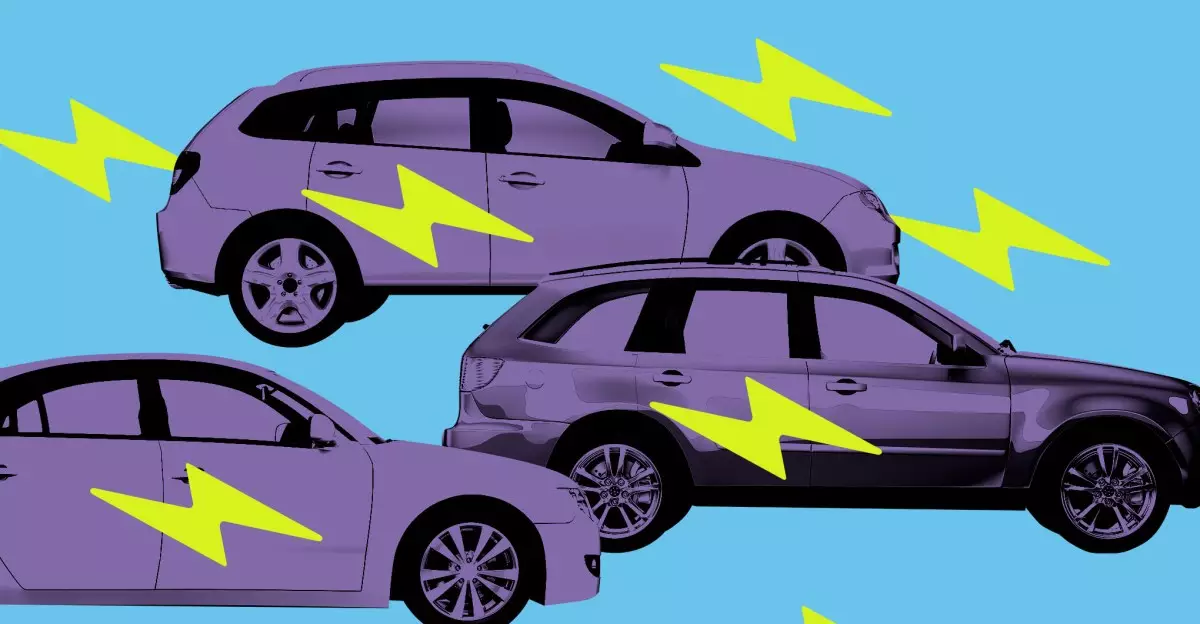In a society driven by technology, the crucial relationship between our driving habits and our safety on the roads has come under increasing scrutiny. A recent study conducted by the AAA Foundation for Traffic Safety reveals an enlightening truth: real-time monitoring of our driving behaviors through smartphone applications could actually be a linchpin in the quest for safer streets. This research invites both skepticism and excitement. Are we ready to leverage cutting-edge technology not just for convenience but for the collective good of safety?
The Data-Driven Approach to Safer Driving
The study harnesses the principles of usage-based insurance (UBI), which has gained traction in the insurance sector. Instead of relying on traditional data sources, such as driving histories and vehicular types, UBI employs algorithms that analyze real-time metrics like hard braking, rapid acceleration, and speeding. While UBI is ostensibly a method for insurance companies to calculate premiums, recent findings indicate that the application of this technology goes beyond financial implications. The AAA study showcases that simply being aware of real-time feedback can inherently nudge drivers towards more cautious behavior.
The research employed a robust framework, utilizing a control group alongside three experimental cohorts: one received generalized feedback, another engaged with targeted feedback on a chosen driving behavior, while the last concentrated on a self-selected goal. This nuanced methodology underscores the importance of individualized data in behavior modification. Initial findings revealed that among those receiving feedback, a commendable percentage displayed significant reductions in unsafe driving behaviors.
Behavior Modification: The Role of Feedback
Feedback is a powerful motivator. The study highlights how a structured approach to providing information can lead to improved driving habits, a phenomenon commonly relegated to the realms of reinforcement psychology. Participants reportedly responded positively to financial incentives; they also preferred weekly updates and dashboards that provided detailed insights into their driving patterns. This underscores the emotional and psychological drivers behind behavior change—people want tangible results and visible growth.
Interestingly, the study revealed a paradoxical element: despite a marked improvement in specific driving behaviors, the participants’ smartphone usage while driving remained largely unchanged. This indicates that while the introduction of feedback can lead to gains in specific areas, habitual non-compliance may remain deeply ingrained. This tension between awareness and behavior modification invites further exploration into the psychological barriers that inhibit safe driving.
Lasting Impact: The After-Study Effects
One of the most striking elements of the study is the assessment of driving habits over six weeks after feedback ceased. The persistence of safer driving patterns among participants signals that positive reinforcement can indeed have a lasting impact. As Jake Nelson from AAA articulated, the essence of this research lies in its emphasis on positive reinforcement rather than merely punitive measures. This is a refreshing take that reframes the narrative of road safety; it suggests we could cultivate a more vigilant and responsible driving culture by equipping individuals with the insights needed to understand their habits.
Challenging the Aversion to Monitoring
Despite the compelling case laid out by the study, there remains an underlying aversion to being monitored while driving. In a world increasingly skeptical of surveillance, the notion of being tracked—even for a beneficial cause—raises ethical questions. It compels us to confront the uncomfortable reality that many drivers have an inflated perception of their driving capabilities. However, the growing acceptance of UBI and related technologies suggests a shift in public sentiment; it illustrates a willingness to embrace digital solutions if they yield a blending of safety and convenience.
As of 2020, a noticeable fraction of auto insurance shoppers had taken the plunge into UBI; by 2024, an even greater segment was opting into these programs. This indicates an evolving mindset—perhaps we are becoming more amenable to the idea of quantified self-improvement when it comes to driving.
The Future of Safe Driving: Harnessing Technology for Change
The implications of the AAA study extend far beyond mere suggestions; they illustrate a transformative pathway to safer driving through real-time analytics. If we continue to engage with these technologies, we can foster an environment where every individual is inspired to be proactive about their driving habits. As we make room for these advancements, it’s vital to strike a balance that respects privacy while also emphasizing collective responsibility.
Ultimately, as our awareness grows regarding the correlation between our behaviors and road safety, perhaps we will redefine what it means to be a conscientious driver in an increasingly digital world. The potential for smartphone apps to revolutionize driving safety is not just a theoretical construct—it could be our ultimate lifeline in reducing road fatalities. The question remains: Will we embrace this change, or remain steadfast in our disregard?

